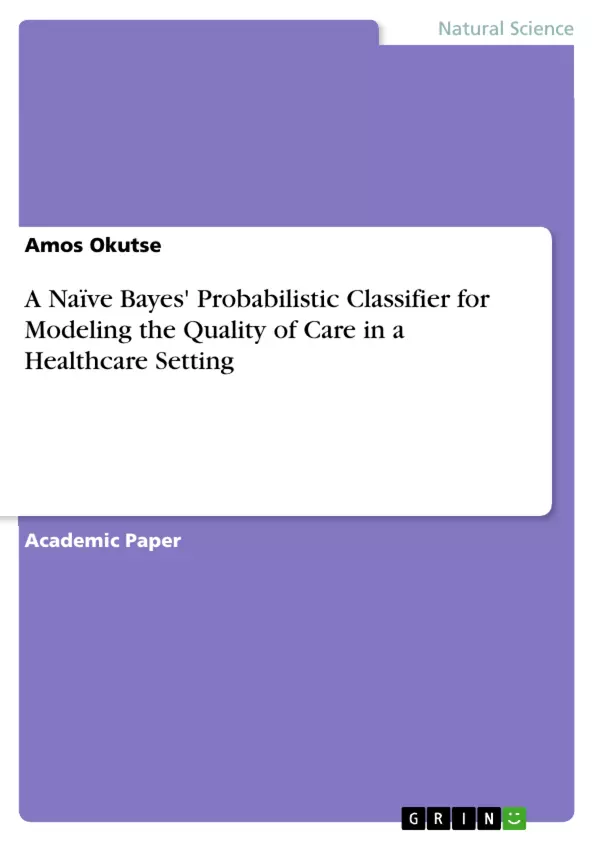In this paper, we implement a Naïve Bayesian probabilistic classifier for modeling the quality of patient care in a healthcare setting.
Using secondary data, we assess the effectiveness of the Naïve Bayes machine learning classifier in modeling the probability of poor care. Exploratory data analytics are performed and visualized using bar graphs, density plots, and heatmaps. We evaluate the performance of this classifier using confusion matrices, specificity, and sensitivity indices. R software is used for statistical programming.
The Naïve Bayes classifier yielded an accuracy of 77%;95%CI (0.5774, 0.9138). The classifier had sensitivity and specificity values of 0.80 and 0.71, respectively; denoting the chance of poor care being classed as poor care when it is poor care and the likelihood of poor care being reported as quality care, respectively. The proportion of poor care was 74%.
The implementation of quality assessment systems in health is likely to drive efficiency in terms of patient care.
Inhaltsverzeichnis (Table of Contents)
- Abstract
- Introduction
- Methodology
- Results
- Discussion
- Conclusion
- References
Zielsetzung und Themenschwerpunkte (Objectives and Key Themes)
This paper investigates the effectiveness of a Naïve Bayesian probabilistic classifier in modeling the quality of patient care within a healthcare setting. The study aims to provide insights into the potential of machine learning for evaluating care quality, particularly during the end of life.
- Quality of care assessment in healthcare settings
- Application of machine learning algorithms in healthcare
- Naïve Bayesian probabilistic classifier
- Modeling the probability of poor care
- End-of-life care and its complexities
Zusammenfassung der Kapitel (Chapter Summaries)
- Introduction: The introduction highlights the growing emphasis on improving healthcare quality through operations management techniques and the challenges of defining and measuring care quality, particularly at the end of life. It emphasizes the need for robust models capable of handling heterogeneity in care experiences.
- Methodology: This chapter details the use of secondary data and the implementation of a Naïve Bayes classifier to model the probability of poor care. The methodology includes exploratory data analytics and performance evaluation using metrics like confusion matrices, sensitivity, and specificity.
- Results: This section presents the findings of the study, including the accuracy of the Naïve Bayes classifier, sensitivity and specificity values, and the proportion of poor care identified in the data.
Schlüsselwörter (Keywords)
The key themes and concepts explored in this paper include quality of care, end-of-life care, machine learning, Naïve Bayes classifier, quality assessment, and healthcare systems.
- Quote paper
- Amos Okutse (Author), 2019, A Naïve Bayes' Probabilistic Classifier for Modeling the Quality of Care in a Healthcare Setting, Munich, GRIN Verlag, https://www.hausarbeiten.de/document/535799


